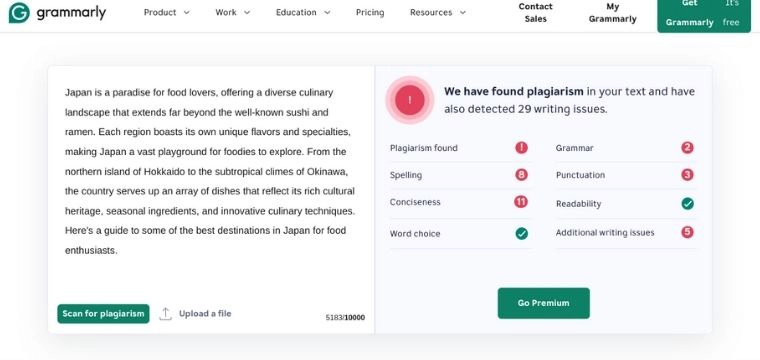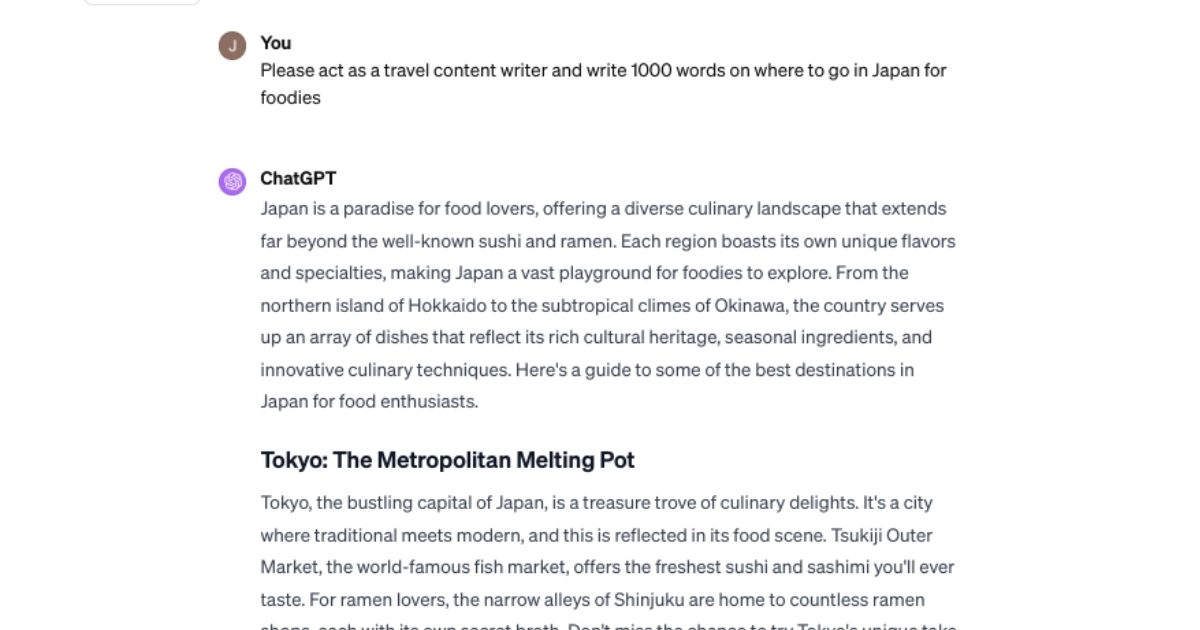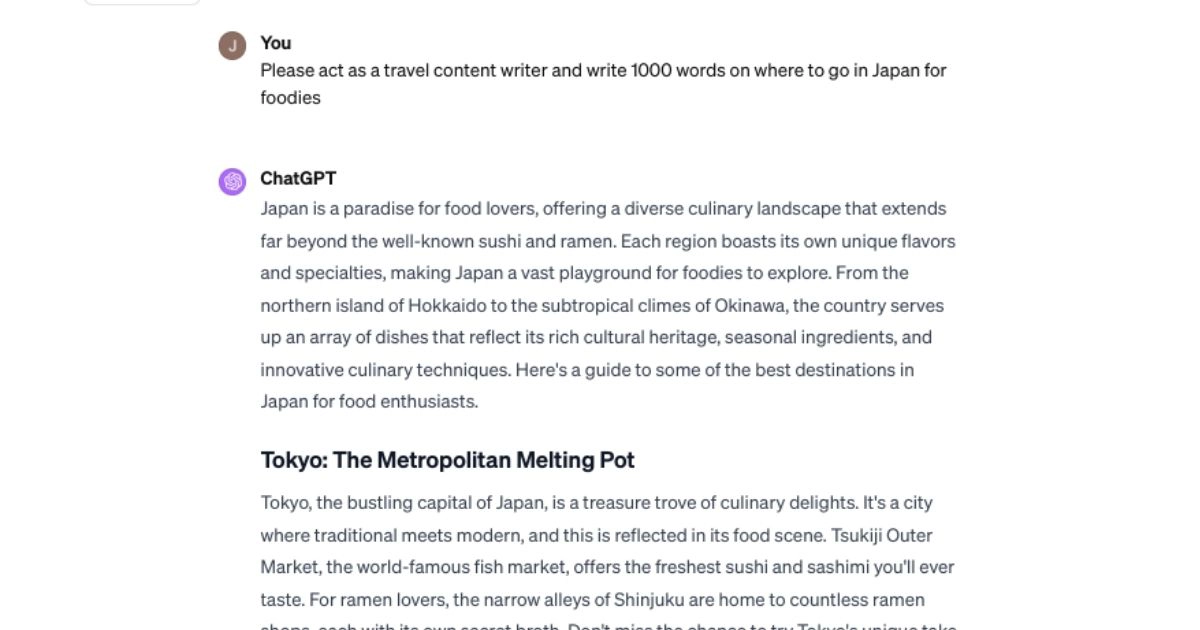
Jay Harlow
Travel Copywriter
As a travel copywriter, I used to use ChatGPT a lot for ideas. But then I stopped, as I realised I was wasting my time. Why? In this post, we’ll explore the reasons.
Table of Contents
ChatGPT regurgitates ideas
Let’s be clear. Artificial intelligence is not artificial creativity. ChatGPT doesn’t ‘think’ or come up with ideas. It calculates them based on the data it has. So when you ask it to come up with blog post ideas or structures, it just throws out what’s already been done. And, depending on the quality of the prompt you gave, these may not be relevant to your business.

I once asked it to help me to structure a blog post around the keyword ‘what to do in Cape Town’, for a travel agency. It came up with totally irrelevant subheadings, like:
How many people visit Cape Town per year.
Fun facts about Cape Town.
Brief history of tourism in Cape Town.
Now think about it, these are not useful headings for the person searching for that keyword.
Instead, they’ll want information like:
- Where to stay in Cape Town.
- The best time to visit.
- Cape Town for kids.
- Beaches near Cape Town.
Of course, it depends on how detailed your prompt is. But even so, it will still recycle what’s already been done. In fact, read my post on ChatGpt and plagiarism to see proof of that. The same will happen if you ask it for “ideas” for your ad copy, CTA buttons etc. It will just spew out what it’s been trained on.
And exactly has it been trained on? Existing content. Travel content, to be exact. Yes, it may mix and match a few things. But you’ll still get a rehash of what’s already been done.
Regurgitated content is bad for SEO
With Google’s “Expertise, Experience, Authority and Trust” (E-E-A-T) philosophy, this sort of regurgitated content won’t rank. You can read the facts here for yourself directly from Google. The algorithm will see it’s not helpful and that it has been produced purely for SEO. And that means the content won’t rank well in search engine results pages (SERPs).

And so what? Well, you need original, not regurgitated, content for search engine rankings and to satisfy your readers. And here’s the thing: you’re not the only travel company in the industry nor even your niche.
Your customers are shopping around. That means they’re reading your competitors’ travel content. There’s also lots of shoddy content out there. So if you leave ChatGPT to come up with ideas, you’ll risk producing unhelpful, low-quality, and often plagiarised content. And what’s the point of that?
What’s the workaround for this then?
For example:
“Please act as a travel copywriter and write a blog post following this structure:
Title: All you need to know about Cape Town
Intro paragraph that summarises the content of the post.
Heading 1: Best time to go
Paragraph 1: Talk about average weather and temperatures for each month.
Paragraph 2: Discuss what types of person go at what time of year, eg when is it best for families, spring breaker etc
Paragraph 3: Talk about special events, like festivals, or local holidays”
Give it that kind of prompt, and you’ll get better – but still not great- results and we’ll discuss why in the next post.

“Jay, that’s going to take a lot of time for me to:
Research the blog post idea
Plan the structure/headings
Plan the content for each heading
Write the prompt
Edit the output
…it’d be quicker to just write it myself, right?”
Yep. That’s right. At least in my case.
As I’ve said many times, you’ll spend all that time writing a prompt to ask it for ideas, only to find they’re terrible. And so you end up going with your own ideas. But by this point, you’ve already wasted half an hour of your time going around in circles. And wasn’t AI supposed to save you time?
The best workaround
Of course I’m biased here, but the best alternative is to use a real living and breathing human to write your travel content.
ChatGPT damages your brand by plagiarising your competitors’ content and copying their ideas. And as for your productivity, don’t even go there. All that time wasted writing prompts and editing the output, to realise that it would’ve been quicker to write it from scratch yourself.
So if you’re ready to ditch the robots and go back to authentic human copy, I’m here for you. Check out my travel copywriting services and packages.



